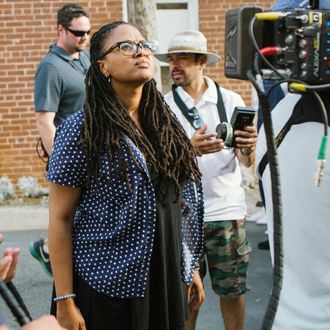
USC’s Media, Diversity, and Social Change Initiative has released its latest report on diversity and representation in the film industry, and the results are as disappointing as they are predictable. 2014 was a banner year for white men: In the top 100 highest-grossing films of the year, just 26.9 percent of speaking parts went to nonwhite actors, and only 28.1 percent of speaking parts belonged to women. When it came to lead roles, the problem was even worse: a meager 21 of the 100 films had a female lead or co-lead. When women characters did show up, they were almost three times more likely to wear revealing clothing or get naked than male characters.
It’s a problem that starts behind the camera, as indicated by the pie charts below. Of the 107 credited directors in the sample, only two — Selma’s Ava DuVernay and Unbroken’s Angelina Jolie — were women, which works out to a miniscule 1.9 percent. And last year was not an aberration: Over a seven-year sample of 700 films, only 28 of the 779 credited directors (3.5 percent) were women. And, naturally, the gender gap isn’t limited to the director’s chair. Of the 295 credited writers of 2014’s top films, only 33 were women — an 11.2 percent share. And of the 926 producers, only 175 were female, a whopping 18.9 percent.
When Hollywood does move away from white male directors, the results are often an “either/or” decision. Over the seven-year sample, 45 of the 779 directors (5.8 percent) were black, while only 19 (2.4 percent) were Asian or Asian-American. Of those 45 black directors, only 3 (6.7 percent) were women; of the 19 Asian directors, 5.2 percent of them were women — in other words, just one.


